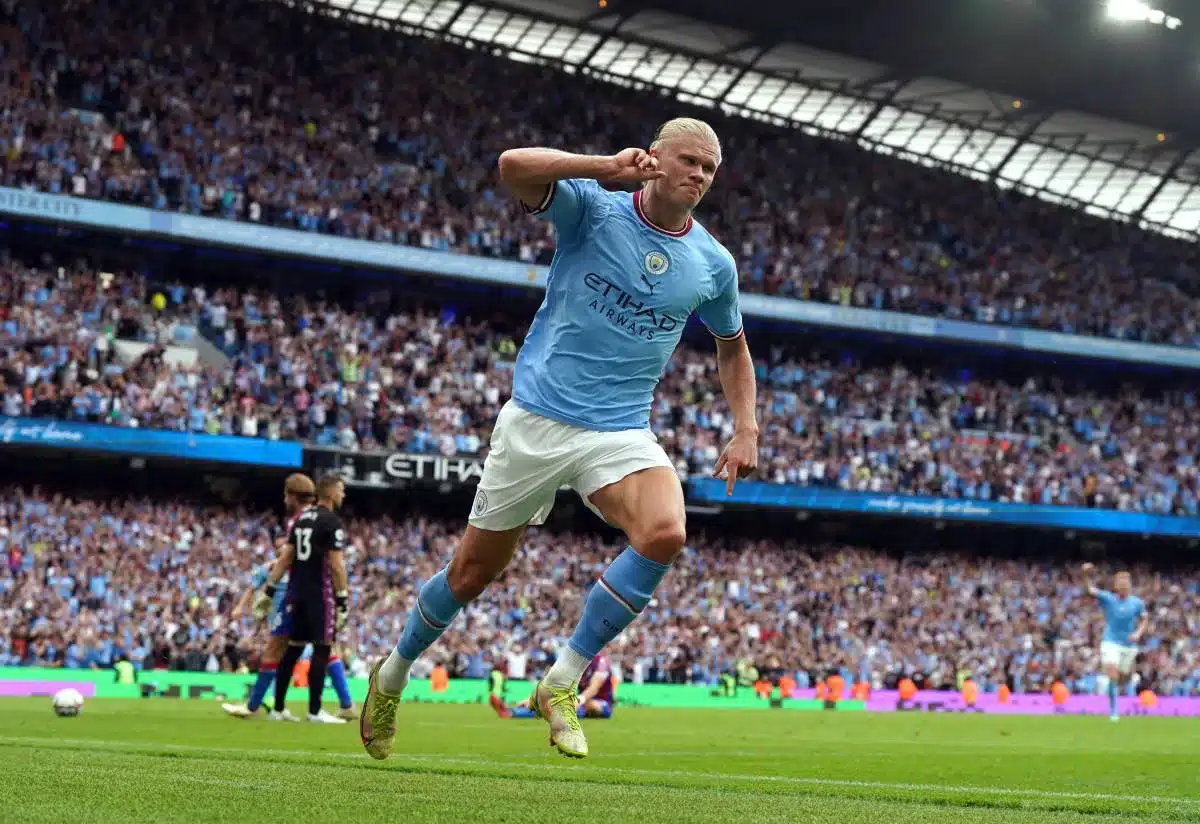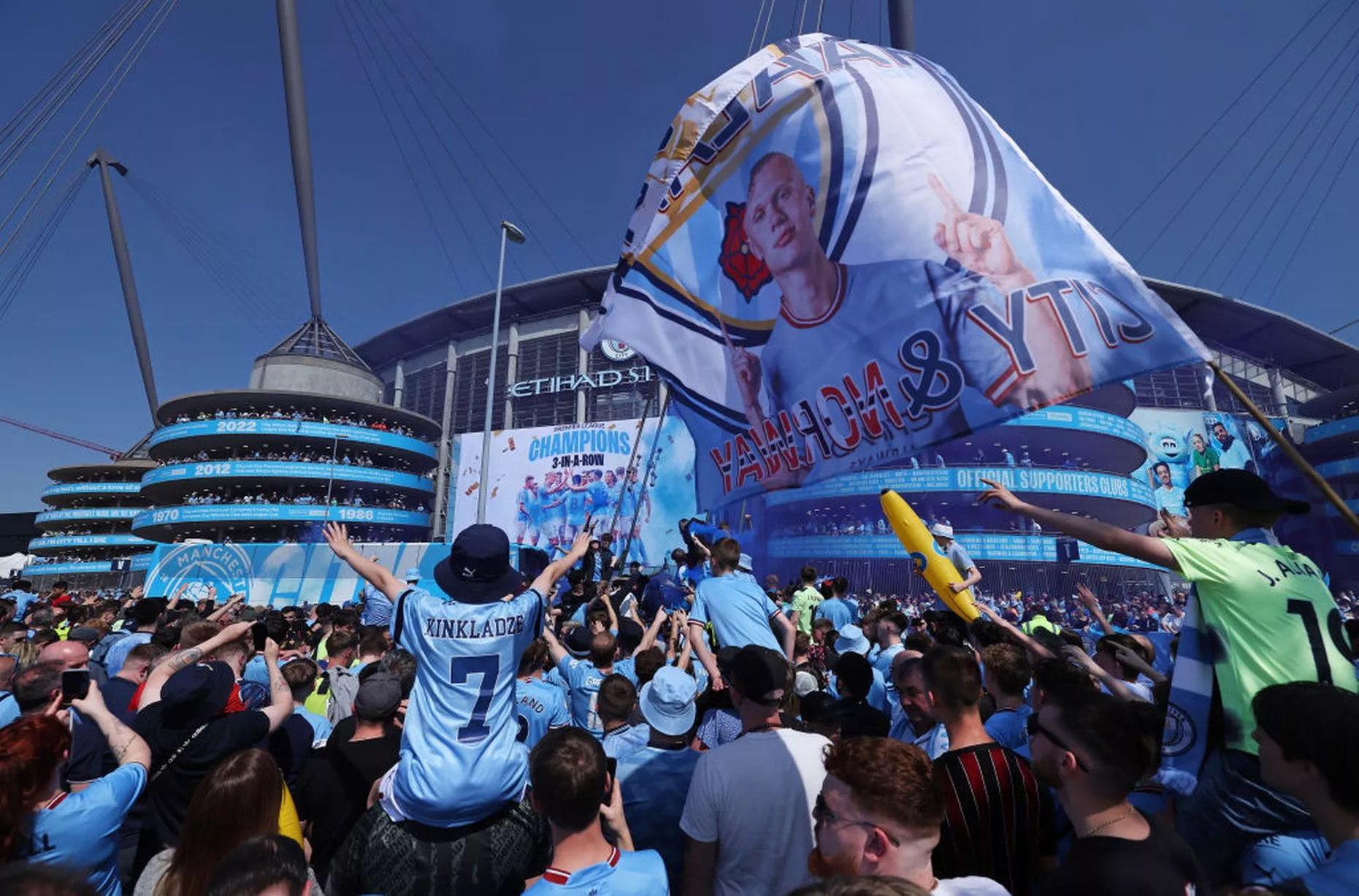Top 10 Richest Football Clubs in the World
The €1 Billion Milestone

Real Madrid’s unprecedented revenue is a testament to the power of strategic investments and brand strength. The recently renovated Santiago Bernabéu Stadium played a pivotal role, with matchday revenues skyrocketing to €248 million—a 103% increase from the previous season. This growth was largely driven by premium seating options, personal seat licenses, and expanded capacity.
Commercial revenue also surged, rising by 20% to €482 million. New sponsorship deals and a revitalized merchandise strategy boosted the club’s commercial income, solidifying its position as the leader in football’s financial ecosystem.
The Top 10 Clubs: A Financial Breakdown

The top 10 clubs in the Money League collectively generated record-breaking revenues. Manchester City retained its position as the highest-earning English club with €838 million in revenue, while Paris Saint-Germain and Manchester United followed closely. The average revenue of the top 10 clubs stood at €899 million, with commercial income accounting for 48%, broadcast revenue at 34%, and matchday revenue contributing 18%.
Interestingly, the gap between Real Madrid and Manchester City widened to €208 million—the largest on record. This financial divide underscores the importance of innovative revenue streams, as the top clubs increasingly rely on commercial ventures to stay ahead.
Richest Football Clubs in the World
- Real Madrid: €1,045.5m
- Manchester City: €837.8m
- Paris Saint-Germain (PSG): €805.9m
- Manchester United: €770.6m
- Bayern Munich: €765.4m
- FC Barcelona: €760.3m
- Arsenal: €716.5m
- Liverpool: €714.7m
- Tottenham Hotspur: €615m
- Chelsea: €545.5m
Infrastructure Investments: A Game-Changer

Stadium redevelopment emerged as a key driver of financial growth in the 2023/24 season. Clubs like Liverpool and Olympique Lyonnais leveraged upgraded facilities to boost matchday and commercial revenues. Liverpool’s Anfield expansion contributed to higher attendances, while Lyon’s multipurpose venue hosted non-football events, enhancing revenue diversity.
However, not all clubs reaped immediate benefits. FC Barcelona experienced a €63 million decline in matchday revenue due to temporary relocation to the Estadi Olímpic Lluís Companys during Camp Nou renovations. Despite this setback, the club is poised for a financial rebound upon returning to its revamped stadium in 2025.
Broadcast Revenue: Stability Amidst Change

Broadcast revenue remained steady at €4.3 billion, accounting for 38% of the Money League clubs’ total income. The stability stems from long-term domestic media rights deals across Europe’s top leagues. However, the Premier League is set to benefit from new international rights agreements in the Middle East and Asia-Pacific regions starting in 2025/26, signaling potential growth in this revenue stream.
The Premier League’s announcement of an in-house media operation, launching in 2026/27, further highlights the evolving landscape of broadcast revenue. By taking control of production and distribution, the league aims to enhance its global reach and financial returns.
On-Pitch Success: A Financial Catalyst

Sporting performance continues to play a crucial role in financial success. Clubs like Arsenal, Newcastle United, and Aston Villa witnessed significant revenue growth due to strong domestic and European campaigns. Arsenal, for instance, reported €717 million in revenue, bolstered by its return to the UEFA Champions League.
Conversely, Juventus experienced an 18% drop in revenue, falling to 16th place—the lowest in its history. The absence from European competitions significantly impacted the club’s broadcast income, highlighting the financial repercussions of underperformance.
Commercial Ventures: The Key to Sustainability

Commercial revenue remained the largest income source for Money League clubs, totaling €4.9 billion. Clubs increasingly leveraged brand value to drive sponsorship and retail income. Tottenham Hotspur and Liverpool maintained their top-10 positions by capitalizing on brand activation, while AC Milan retained 13th place despite missing out on Champions League revenue.
Olympique Lyonnais exemplified innovation in commercial strategies, generating a €27 million lump sum by licensing its brand to OL Féminin. Such initiatives underscore the growing importance of diversifying income streams beyond traditional matchday and broadcast revenues.
Challenges and Future Outlook

While the Money League highlights financial success, it also underscores challenges. Player workload management has emerged as a critical issue, with top clubs like Real Madrid and Manchester City potentially playing up to 70 matches in a season. The expanded FIFA Club World Cup in 2025 and changes to UEFA competitions are expected to exacerbate this issue.
Additionally, over 300 stadium projects are underway globally, reflecting a shift toward multipurpose venues. These developments aim to create stable revenue streams while addressing community needs. However, balancing revenue optimization with player welfare and community impact remains a pressing concern.
The Path Ahead
As the financial landscape of football continues to evolve, clubs must innovate to stay competitive. The top Money League clubs have set a precedent by leveraging infrastructure, commercial ventures, and on-pitch success to drive growth. For others to break into the elite, a combination of strategic investments and consistent sporting performance will be essential.
The Deloitte Football Money League 2025 serves as a reminder of football’s global appeal and its potential as a business powerhouse. With Real Madrid leading the way in the richest football clubs in the world, the sport is poised for a future where financial ingenuity and sporting excellence go hand in hand.
- Marcus Rashford Open to Barcelona Move, Keen to Link Up with Lamine Yamal - June 24, 2025
- Jalen Hurts Shocks Fans With First Children’s Book Reveal - June 24, 2025
- Travis Hunter Signs Massive $46M Deal with Jaguars - June 24, 2025

